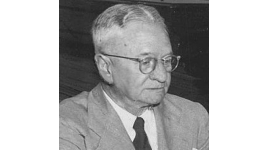Pioneer Information
An early conservationist known as the “Father of the Wilderness Concept,” Carhart was born in Mapleton, Iowa. He received a B.S.L.A. from Iowa State College in 1916 and worked briefly for O.C. Simonds before entering the Army in 1917.
Carhart joined the National Forest Service in 1919 as its first full-time landscape architect. Stationed in Denver, he surveyed Trappers Lake in the White River National Forest for future development. His report, which recommended that the lake be kept free of development, set a new direction for the agency. He corresponded frequently with Aldo Leopold, advocating the concept of wilderness preservation. In 1920 he created the first-ever comprehensive forest recreation plan, developed for the San Isabel National Forest. The next year he surveyed the Superior National Forest in Minnesota, an area he continued to champion along with the Quetico-Superior Boundary Water Canoe Area.
In 1922 he entered into private practice with Irvin J. McCrary and Frank H. Culley. The firm’s projects included Colorado General Hospital and a recreation plan for the city of Denver. A prolific writer, Carhart left the firm in 1931 to focus on his writing. In 1938 he became co-coordinator for the Federal Aid in Wildlife Restoration program. From 1943-1946, he worked with the Office of Price Administration. For the rest of his career he returned to writing, producing 24 books and more than 4000 articles.







